
The Seychelles – just the name conjures up images of golden sandy beaches, palm trees, turquoise waters, sunset cocktails and five-star beachside resorts. The islands are a luxurious enclave for honeymooners, celebrities and billionaires. But what if your travel style’s more budget-luxury than five-star – can you visit the Seychelles on a budget?
When I found a flight to South Africa with a stopover in the Seychelles along the way, I couldn’t resist seeing if it was possible to visit the islands without spending big. And although it’s never going to be an ultra-cheap destination, it turns out that keeping costs down isn’t impossible, even when you’re following in the sandy footprints of A-listers and royalty.
Read more: Thing to do in Mahé: A one-day Seychelles road trip itinerary
Visiting the Seychelles on a budget

Planning your budget trip to the Seychelles
There are 115 different islands in the Seychelles archipelago, but most are uninhabited so it comes down to a choice between the three main islands as to where to stay – Mahé, Praslin and La Digue. Mahé is the largest and is home to the Seychelles’ capital Victoria and the international airport. Praslin is smaller and accessible by plane or ferry, and from there you can get the ferry to La Digue – the smallest, quietest and arguably prettiest island.
The islands are fairly close together so it’s tempting to try and see them all, but travel time and costs add up, so if you only have a few days it’s best to focus on one. Accommodation prices tend to be lower the longer you stay, so you save money by staying in one place.
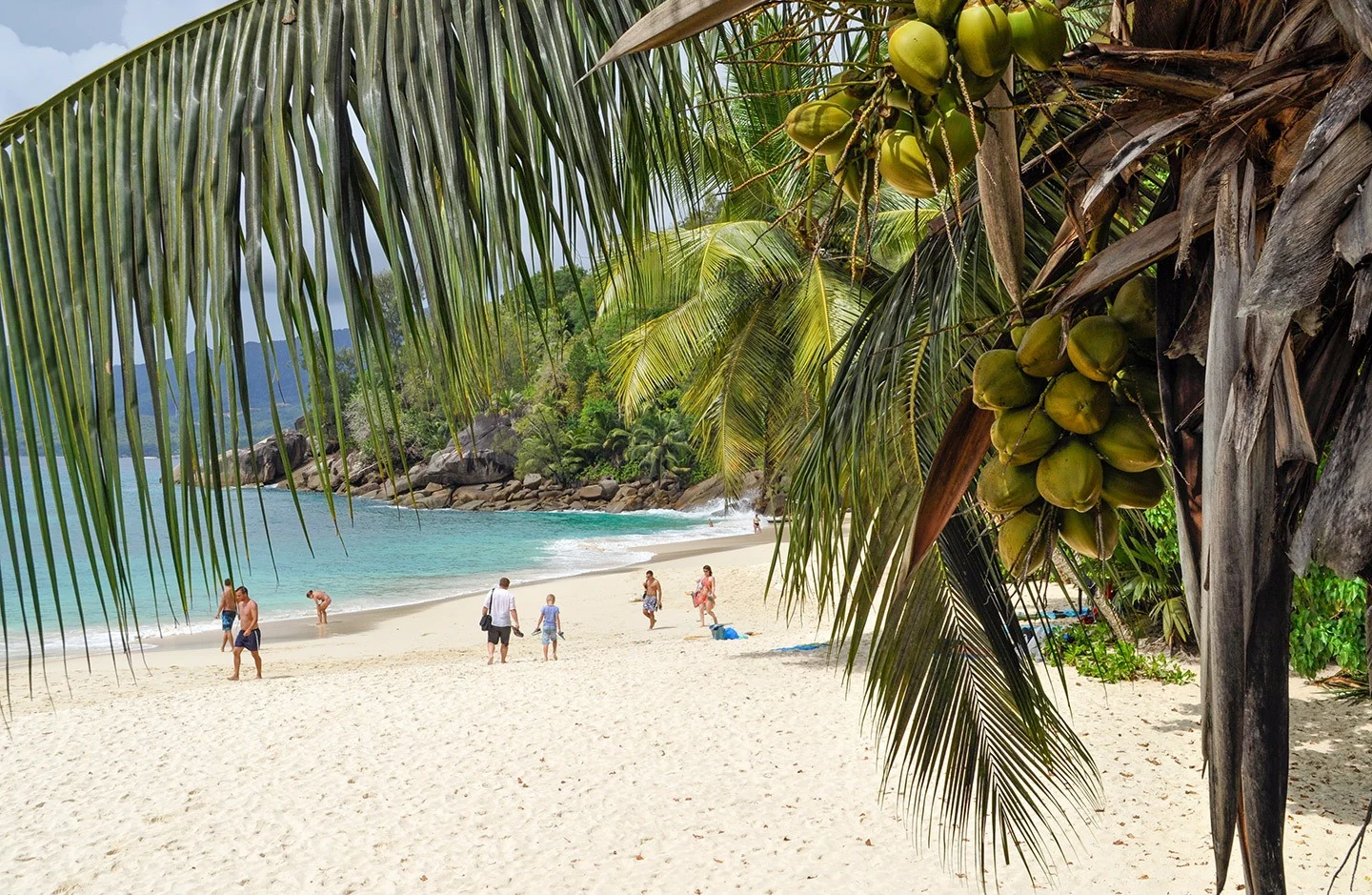
Mahé is the cheapest island as it’s the easiest to get to and the biggest so there’s more competition for accommodation. As we only had a four-day stopover we stuck to Mahé, but if you have a week you can easily hop between islands and try a couple of different locations. From Mahé the fast ferry to Praslin takes about an hour and costs around €100 return, or Mahé to La Digue (via Praslin) takes 90 minutes and costs around €120 return.
The Seychelles’ currency in the rupee (SCR or Seychellois Rupee), with around 29 rupees to the Pound, 26 to the Euro and 21 to the US Dollar. Most things have to be imported, so bring plenty of sunscreen, mosquito repellent and toiletries to avoid high imported prices.

When to visit the Seychelles
Peak season in the Seychelles is from December to January and from June to August, which is when you’ll pay higher prices and need to book well in advance. Rainy season is from January to February, but it’s still warm and downpours are usually short. So if you don’t mind risking a shower you can save money on flight and accommodation costs.

Where to stay in the Seychelles
You need proof that you have accommodation booked when you arrive into the airport, so the Seychelles aren’t the sort of place you can wing it and pick up a last-minute bargain. When you’re looking at where to stay in the Seychelles, the luxury options outweigh the budget gems, so if you want to bag the best places try to book as far ahead as you can.
Hotels in the Seychelles can to be expensive, so instead look for either family-run guesthouses, preferably ones which include a good breakfast, or self-catering options like chalets, bungalows and villas so you can prepare some of your own meals. Expect to pay £60–£110 ($80–$150) per room per night, depending on location and facilities.

We stayed in the one of two Fler Payanke* studio apartments on the east coast of Mahé, which cost us £85/$116 a night. They’re set on a hill overlooking Anse Royale bay, with a balcony and kitchen and are walking distance to a beach, bus stop and shops.
Other good AirBnBs on my shortlist were this studio* in the far north of Mahé (£80/$110 a night for two) and this cottage* with pool on the west coast (£109/$149 a night for two).
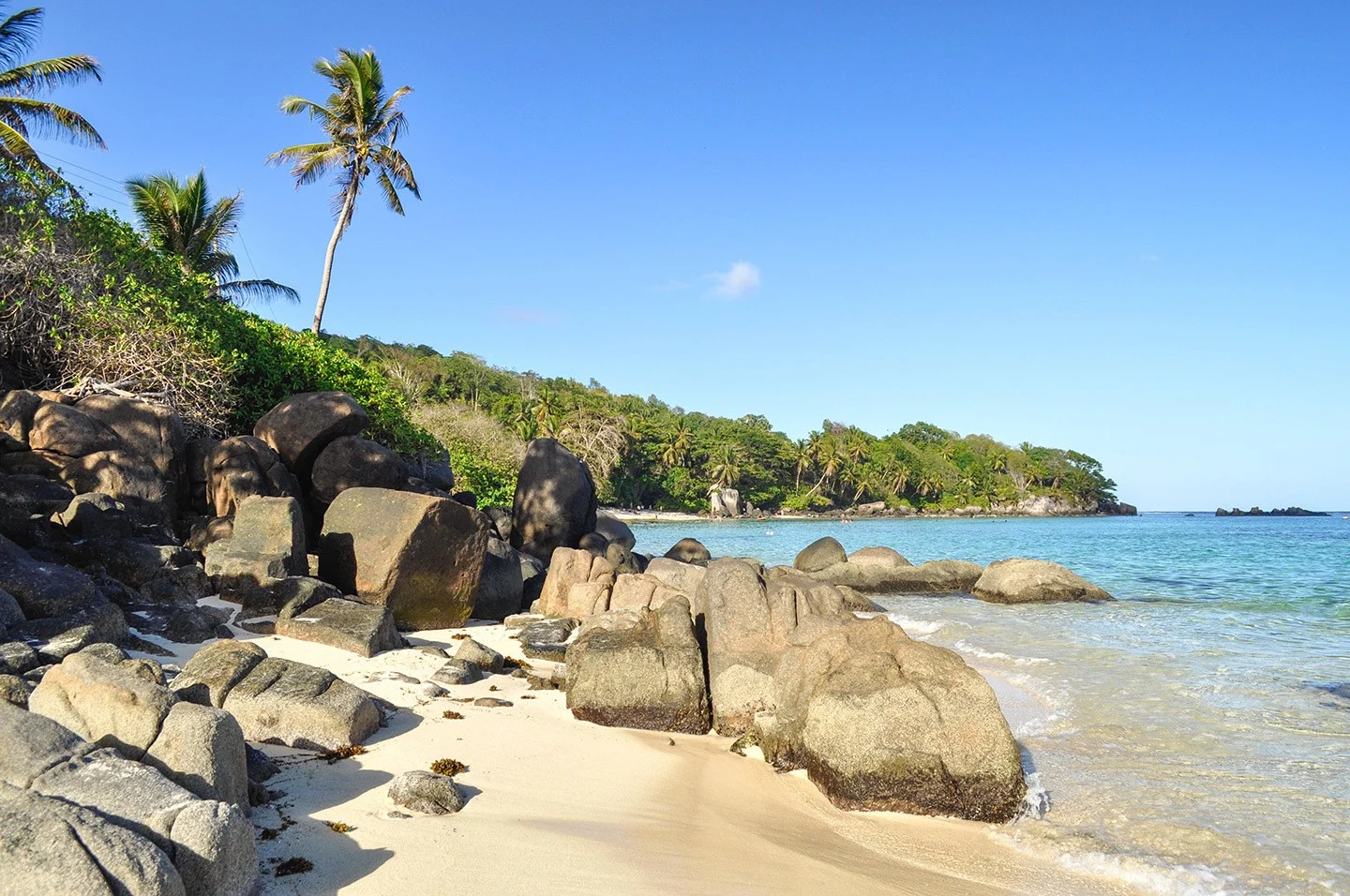
Getting around the Seychelles
La Digue is so small that, other than a few taxis, most people get around the island by bike or ox cart. Both Mahé and Praslin are bigger so if you want to explore the easiest way is to hire a car. Car hire in the Seychelles costs around £30/$40 a day. The cars available are mostly small automatics, which are slow but nimble on Mahé’s windy mountain roads.
Petrol costs fluctuate but we paid around 170 rupees per 10 litres of fuel on Mahé – spending a total of 370 rupees (£13/$17) over four days after driving almost every road on the island.

If you don’t want to hire a car or want to keep costs to a minimum, the best option is the public buses – Mahé’s mountain roads are hard going for cycling and walking can be dangerous as there aren’t many pavements. The buses cover over 40 different routes across Mahé and Praslin – we spotted them even on the smallest beach roads. Though services are not always very frequent so make sure to check the timetables.
They use old blue Tata minibuses and the driving can be a bit crazy so hold on tight around the mountain hairpin bends! It’s easy to find the bus stops as they’re painted on the road, and a flat fare single journey costs 6 rupees (20p/30¢), however far you travel.

Things to do in the Seychelles on a budget
The Seychelles are all about the beaches – and they’re the islands’ best bargain. Most beaches are free access, so even those with five-star resorts on are open to the public. So you can beach-hop your way around the islands and join the jet set at the Banyan Tree resort* at Anse Intendance, MAIA resort* at Anse Louis or Four Seasons Hotel* at Petite Anse.
You can usually access the beach from the road so you don’t have to walk through hotel grounds. There are some off-road parking areas or otherwise you can park on the side of the road, and buses stop at all main beaches. Strong currents mean some beaches aren’t safe for swimming, or are only safe at certain times of the year, so check signs before taking a dip.

The one exception to the free beaches is the famous Anse Source d’Argent on La Digue – said to be one of the most photographed beaches in the world. It’s in a National Park so there is a 115 rupee ($5) entry fee per person through the L’Union Estate coconut plantation.
Away from the beaches there are a few other cheap things to do in the Seychelles on a budget. There are hikes along the coast or through the mountainous area in the centre of Mahé. Among the most popular walks on Mahé are the coast path from Beau Vallon to the secluded beach at Anse Major (around two hours return) and the steep climb up to Morne Blanc for amazing views out over Morne Seychellois National Park (two hours return).

If the weather isn’t so good there’s a Natural History museum (entry 15 rupees/50p/70¢) and a Hindu temple in Mahé’s capital Victoria, as well as the Botanic Gardens just outside the city at Mont Fleuri (100 rupees/£3/$5). Mahé is also home to the Takamaka rum distillery which runs tours and tastings from Monday to Friday (250 rupees/£9/$12).
If you have more money to spend and fancy splashing out (excuse the pun), you can take a snorkelling or diving trip, a boat trip to one of the uninhabited islands Curieuse, Cousin Island or St Pierre, or spot whale sharks between August and October.
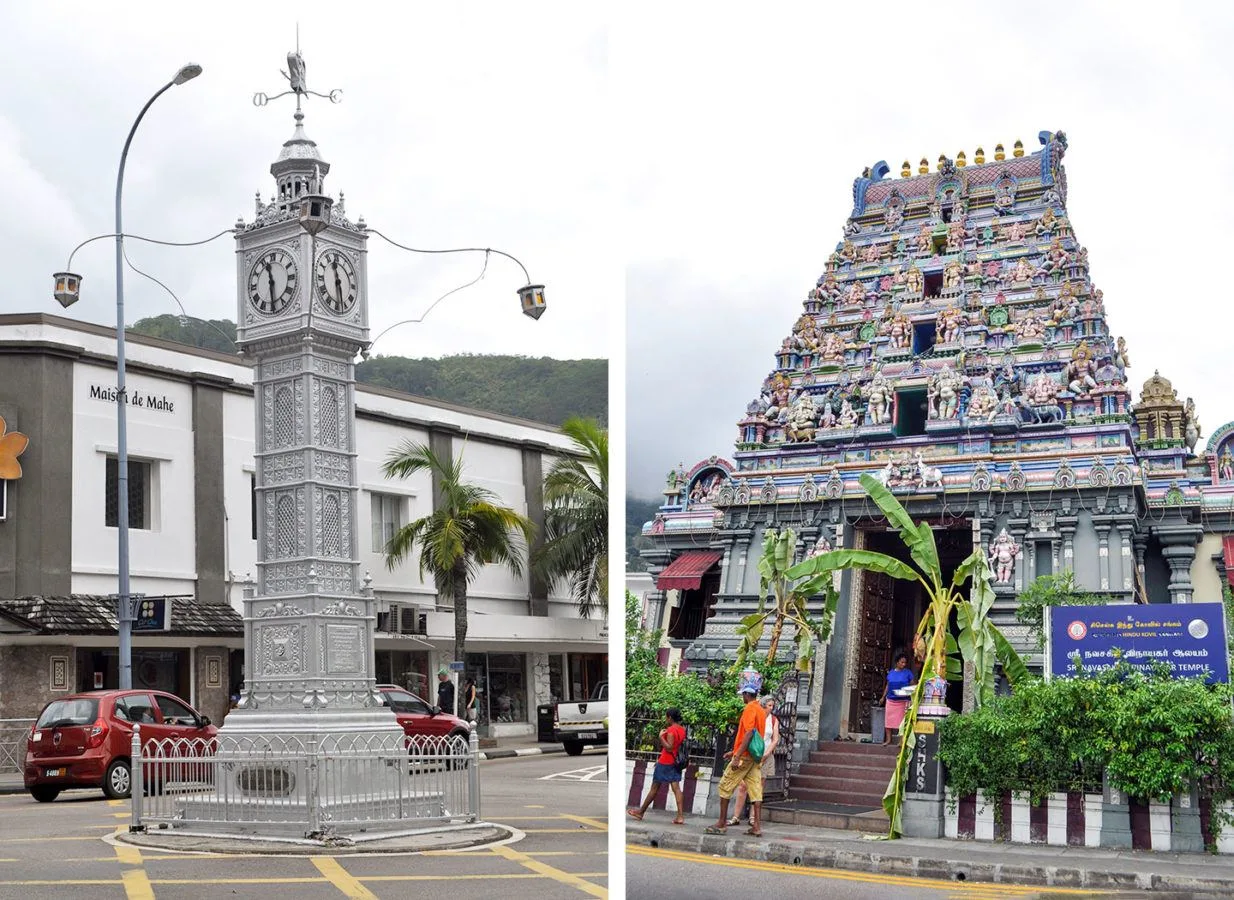
Seychelles food and drink
Apart from fish and a few varieties of fruit and vegetables, everything else has to be imported into the Seychelles so it comes at a premium price. So a basic main course in a restaurant costs around 300 rupees (£10/$14) and at high-end resorts they can be much pricier. A three-course meal with drinks and service charge can easily cost £50/$70 per person.
One bargain in Mahé is Beau Vallon’s Wednesday market (4pm–8pm), known as the Bazar Labrin, with freshly cooked dishes like satay, grilled fish and coconut curry. You can also find inexpensive takeaways and food trucks around the islands which cater for locals and serve big portions of Creole food for under 100 rupees (£3/$5).

Self-catering helps keep the costs down – we mixed up dinners out and lunchtime picnics on the beach. Victoria’s covered market is open every day except Sunday and sells local fruit and veg, spices and fresh fish – you’ll also see fish sold at the roadside.
There are also lots of little Indian-run supermarkets around the islands where you can pick up drinks and basic food items. Or there are a couple of bigger international supermarkets in Mahé – a Co-op in the Eden Island development and a big STC on the outskirts of Victoria. Both sell a lot of imported European products (mainly from France) so aren’t cheap.
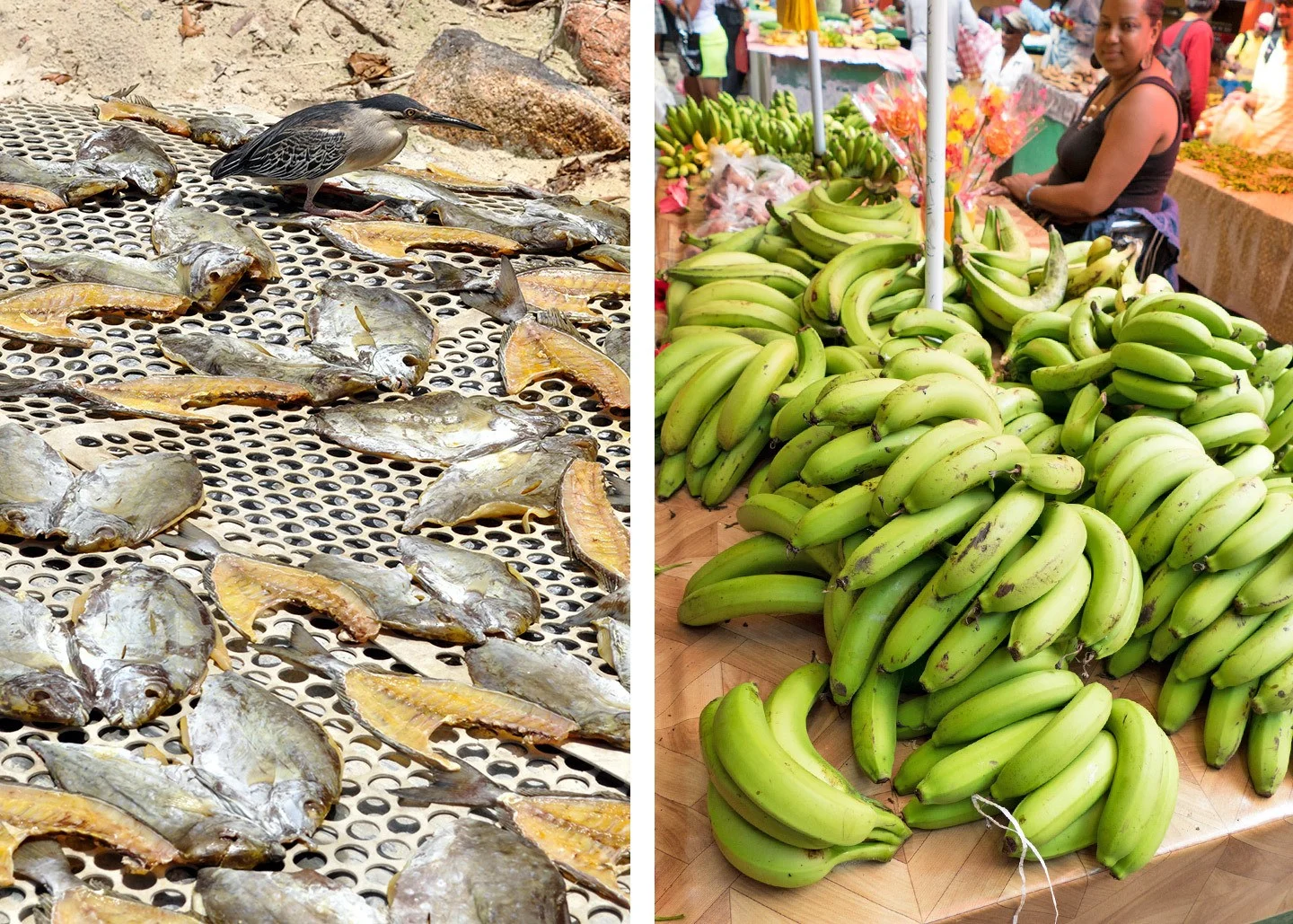
If you’ve got space in your bag it’s worth bringing a few food basics like pasta, cereal bars, tea and coffee to get you started, and stock up on alcohol at duty free before you arrive. You can’t bring any plant or animal products into the Seychelles from abroad, but you can bring in up to two litres of wine and two litres of spirits per person.
Both Seybrew beer and Takamaka rum are produced on the islands so they cost less than imported drinks. You can also save by buying drinks in local shops – you’ll pay around 35 rupees (£1/$2) for a Seybrew there versus 180 rupees (£6/$8) for a beach bar cocktail.

The verdict
So, can you visit the Seychelles on a budget? Well sort of! If you’re on a very tight budget you might struggle with food and accommodation prices. But for around £80/$110 a day per person you can stay in an apartment, rent a car, beach-hop and hike, eat takeaways and have a few local drinks. It’s very easy to spend more though, so it’s a destination where you need to always keep an eye on the budget – but it’s worth it for a taste of Indian Ocean paradise.
Pin it
* This site contains affiliate links, where I get a small commission from purchases at no extra cost to you.


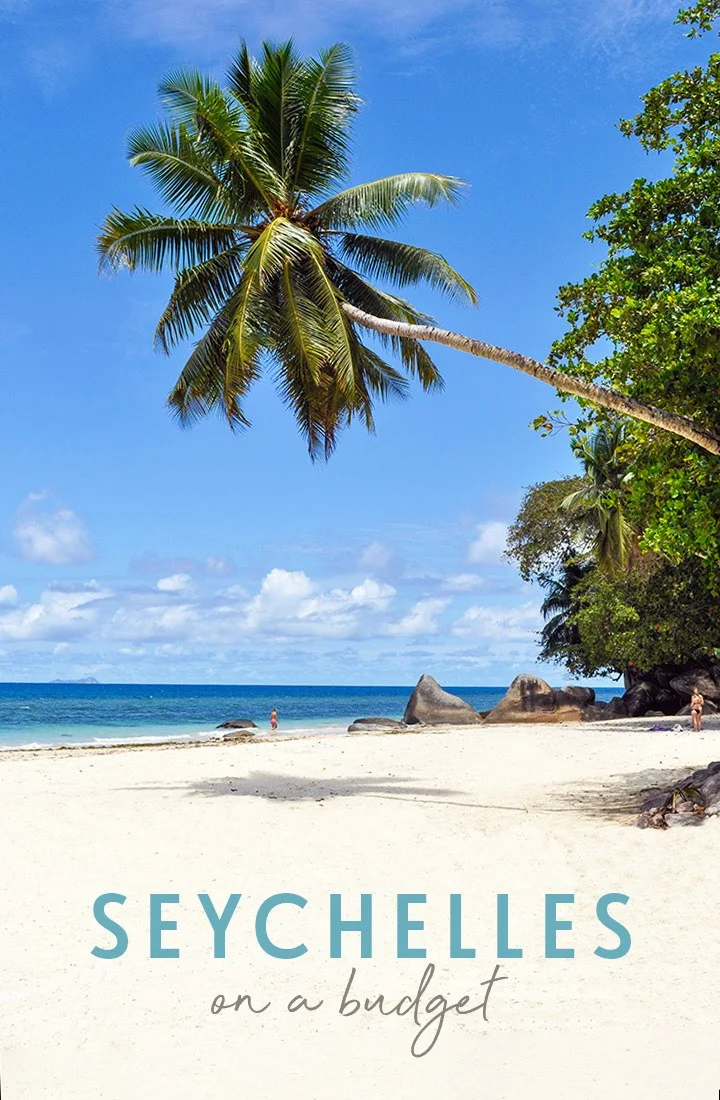
Global MJ
Sunday 12th of September 2021
Hi Lucy.. thanks for the tips. Im planning to fly over to Sezchelles the 1st week of Oct (from a trip to Doha) from NY (my home). Im travelling solo - female - late 40s.. any thoughts on that? Typically I like to immerse a bit in local.. buses, markets, etc.. Its my 1st Africa(ish) trip. But truly Id love your thoughts on WHERE.. ugh loaded question to stay.. Id like good beaches as in swimming.. little surf is good.. sometimes the prettiest have too much coral to really frolic in the sea; also like to stroll about shopping, restaurants, maybe take in something localish (show, etc.) Rather than the prettiest beach in a remote area Id be good with a regular beach around stuff but not super urban.. touristy town is good. Thanks!
Bethel
Sunday 13th of June 2021
I want to visit sychilles next year with my husband Please can you tell us all expenses in US dollar to stay 5 days
Jose
Saturday 12th of June 2021
Nxt tym u come just holla me I can make you gluten free meal.
Stefanie
Monday 28th of September 2020
I am vegetarian and have a limited diet don't each much diary either. Would I find food I could eat in the seychelles?
Lucy Dodsworth
Tuesday 29th of September 2020
Vegetarian options should be no problem but you might be more limited with avoiding dairy too – some resorts do offer vegan options or the other thing you could do is rent a self-catering place and make some of your own food (supermarkets are quite pricey but sticking to local produce should help).
Ronan
Wednesday 5th of February 2020
Hi Lucy, thanks so much for sharing your experiences. We are going there in April for our honeymoon and were wondering on the split of where rupees are used and where Euros would be needed. Since on a budget trip, we would be buying a lot of supplies from supermarkets and eating at small takeaway joints, Im assuming that these would accept rupees only? Also I assume that stuff like ferry bookings, car rentals, accommodation payments, etc would be in euros? Thanks
Lucy
Monday 10th of February 2020
Hi yes that sounds about right – we mostly used Euros for major expenses, and rupees for drinks, snacks etc (I think often you get a better deal in rupees). There were banks and currency exchanges in the main towns so we never had too much trouble exchanging. Hope you have a fantastic trip!